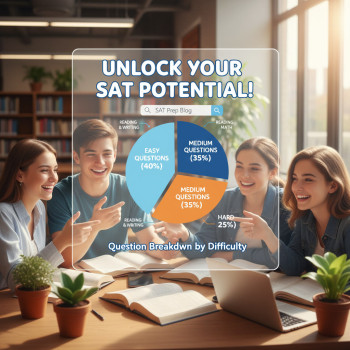SAT Reading Dual Passages: The Biggest Traps and How to Outsmart Them
If you’ve stared at a pair of SAT Reading passages and felt your brain go hazy, you’re not alone. Dual passages are the reading section’s trickiest beasts: two short texts, usually related by theme or by argument, placed side by side to test your ability to compare, contrast, and reason. They force you to juggle viewpoints, keep details straight, and resist the seductive allure of answers that sound confident but aren’t supported by the passages.
This post walks through the most common traps—those little snares that cost students points—and gives practical strategies you can use in practice and on test day. I’ll also sketch a realistic timing plan, include quick-reference tables, and offer examples that show trap vs. correct approach. And if you want an extra boost, Sparkl’s personalized tutoring and benefits—like 1-on-1 guidance, tailored study plans, expert tutors, and AI-driven insights—can plug the holes in your preparation, but the strategies here are the foundation you can apply right away.
What Are Dual Passages and Why They Feel Hard
Dual passages are two short texts that are presented together because they relate in some way: they might present opposing positions, different approaches to the same topic, or two takes on a historical event. Instead of asking about each passage in isolation, the SAT mixes questions about individual passages with questions that require you to compare them. That multiplies the cognitive load: you need passage comprehension and cross-passage synthesis.
Why that feels harder than single passages:
- You must hold two line of thought structures in working memory at once.
- The test often asks you to choose the best answer that is supported by both passages—or that best explains why the authors disagree.
- Distractors are built from partial truths in one passage or paraphrases that sound right but aren’t fully supported.
The Biggest Traps (and How to Beat Them)
Below are the perennial traps that cost students the most points when tackling dual passages. For each trap, I’ll describe how it shows up and give a simple practice habit or on-the-spot fix.
Trap 1: Answering from Memory Instead of the Passage
The SAT isn’t asking for what you vaguely remember about a subject—it’s asking for what the passage actually says. Students who come prepared with facts from class or intuition about a topic are often tempted to choose an answer because it matches their knowledge, even when that answer isn’t in the text.
How it shows up: An answer choice paraphrases common knowledge, not the passage (e.g., you know that caffeine affects sleep, so you pick that option even though the passage only says caffeine disrupts attention).
Quick fix: Always scan the referenced line(s) or paragraph before locking an answer. Ask: Does the passage state or strongly imply this?
Trap 2: Confusing Inference with Outside Knowledge
Inference questions require you to draw a conclusion that the passage suggests, not to add facts from your life or classes. Students often make the leap from implication to assumption.
How it shows up: The correct answer is a subtle restatement of what the passage implies; distractors add extra steps that require outside info.
Quick fix: Phrase the inference as a sentence that begins, “The passage suggests that…” If you can complete it using only passage details, it’s likely safe.
Trap 3: Overlooking Change in Tone or Viewpoint
Dual passages are often about comparison—so tone and stance matter. A trap arises when you assume both authors share the same frame, or when you miss subtle shifts in attitude within one passage.
How it shows up: A question asks which author is more skeptical or which passage treats a topic as a problem. Students choose the stronger language or their subjective sense of tone rather than the passage’s concrete words.
Quick fix: Note signal words and verbs—”claims,” “suggests,” “argues,” “concedes,” “contradicts”—and mark where each author shows approval, neutrality, or skepticism. If you read actively for attitude, tone questions suddenly get easier.
Trap 4: Paraphrase Traps — Close but Not Supported
Test writers use paraphrase cleverly: an incorrect answer will be a close restatement of a line, but it adds or removes a key qualifier that changes meaning.
How it shows up: An answer swaps “sometimes” for “always,” or turns “may” into “does,” shifting the claim from tentative to absolute.
Quick fix: Watch for qualifiers (always, sometimes, often, may, might, could) and compare them carefully to language in the passage. If the passage hedges, your answer must too.
Trap 5: Picking Answers That Are Too Broad or Too Narrow
Some choices feel right because they are true in general, but the SAT wants the answer that best fits the passage’s scope. Conversely, a choice may be factually true but narrower than what the question asks.
How it shows up: The passage discusses a specific cultural practice, but the answer generalizes to an entire society. Or the question asks about central idea, but you pick a detail-level answer.
Quick fix: Reset to the question: “Is the question asking for the main idea, a detail, or a purpose?” Use that to filter choices that are too big or too small.
Trap 6: Misreading Comparative Questions
Comparative questions ask how the passages relate—whether they agree, disagree, or emphasize different aspects. Students often answer for one passage only, missing the instruction to compare.
How it shows up: Question stem reads, “The passages differ primarily in…” and students answer with a difference that applies only to Passage A.
Quick fix: Reword the question: “What is the primary difference between Passage A and Passage B?” Say a short comparative sentence out loud or in your head (e.g., “A focuses on cause; B focuses on consequence”).
Trap 7: Chasing the Wrong Evidence for Support Questions
Evidence questions require you to pick a line or paragraph that best supports a previous answer. The trap is choosing a passage segment that seems related but doesn’t actually justify your earlier choice.
How it shows up: You answer a reasoning question and then pick an evidence line that mentions the same topic but doesn’t link directly to your reasoning.
Quick fix: When answering the first part, underline the exact phrase or idea you used to justify your answer, then find the evidence that matches that phrase or idea most directly. The best evidence will typically restate or exemplify your reason, not just repeat a theme word.
Trap 8: Letting Time Pressure Force Sloppy Reading
Tight timing can make you rush, and rushing increases all the above errors. The SAT Reading section rewards careful, strategic reading more than speed for its own sake.
How it shows up: You skim both passages once and try to answer every question from memory. Small differences or qualifiers slip by.
Quick fix: Use an efficient read—see the timing table below—and do a strategic second pass for questions that require detail or comparison. When you practice, train with strict timing so your muscle memory knows how much to skim and when to slow down.
Real Examples (Short, Focused)
Examples help. Below are condensed, illustrative examples that simulate the type of thinking the test expects. These are not official SAT passages, but they represent the format and traps.
Example 1: Tone and Paraphrase Trap
Passage A describes a new urban garden program and says the planners “cautiously anticipate” community benefits. Passage B celebrates the program, calling it a “transformative” model.
Question: Which best describes the difference in tone? A) Both passages are enthusiastic. B) Passage A is tentative; Passage B is celebratory. C) Both passages are neutral. D) Passage A is critical; Passage B is neutral.
Trap: A student picks A because both discuss benefits. But the correct answer is B, because Passage A uses hedging language (“cautiously anticipate”) while Passage B uses strong praise (“transformative”). Observe the qualifiers.
Example 2: Inference vs. Outside Knowledge
Passage A discusses ways city planners measure traffic flow and notes a “recent emphasis on short-term counts during rush hour”; Passage B critiques such measurements as missing evening patterns.
Question: Which can be inferred from Passage B? A) Planners never study evening traffic. B) Evening traffic can differ from rush-hour patterns. C) All cities lack evening data. D) Toll policies cause skewed evening counts.
Trap: A student with outside knowledge about toll policies picks D. The correct answer is B—it’s the safe inference that follows from the passage’s critique.
Timing Strategy: How to Allocate Your Time
Treatment of dual passages benefits from a slightly different timing plan than single passages. You’ll need a careful first read and then a question-by-question approach that allows for comparisons.
| Task | Suggested Time | Reason |
|---|---|---|
| First read of both passages (skimming with intent) | 2–3 minutes | Get the main idea and the authors’ stances; mark signal words and contrast points. |
| Answer detail and vocabulary questions | 3–4 minutes | Locate line references and avoid overreliance on memory. |
| Comparative questions and evidence pairs | 3–5 minutes | Revisit both passages for direct support; compare authors’ claims carefully. |
| Review and difficult questions | 1–2 minutes | Use remaining time to double-check tricky wording or confirm evidence choices. |
Note: These numbers are per dual-passage set. In practice, adjust to your test pace: the idea is to read once with intention, locate evidence carefully, and leave a short window for review.
Quick-Reference Table: Trap, How It Appears, Fast Fix
| Trap | How It Appears | Fast Fix |
|---|---|---|
| Memory over passage | You pick a true fact not stated in the text | Scan referenced lines before answering |
| Inference vs. outside knowledge | Answer needs extra assumption | Complete: “The passage suggests…” using only passage info |
| Tone shifts | Missed hedging or contrast | Underline attitude words; compare verbs |
| Paraphrase traps | Small qualifier changed | Match qualifiers exactly |
| Too broad/too narrow | Answer doesn’t fit scope | Ask: main idea, detail, or purpose? |
Practice Habits That Actually Work
Practice must be purposeful. Mindless passage after passage builds speed but not precision. Here are high-leverage habits that translate into real score gains.
- Active reading with annotations: Circle thesis sentences, bracket contrasting paragraphs, and underline qualifiers. These tiny marks guide you back to the right place when questions reference lines.
- Practice evidence chaining: For every inference or comparative question, write a one-sentence justification and underline the words in the passage that support it. This forces you to connect answer to text and reduces guesswork.
- Drill qualifiers: Create a one-page cheat sheet of common qualifier words and practice spotting the difference between “may” and “does” or “occasionally” and “often.”
- Simulate test conditions selectively: Time some passages strictly, and for others remove the clock to train accuracy. Then combine—accuracy under time builds confidence.
- Review wrong answers carefully: Don’t just note that you missed a question—figure out why. Was it misreading, weak vocabulary, or an unsupported leap? That diagnosis directs your practice.
When You Need Extra Help
Some traps persist because they reveal deeper habits: a tendency to overgeneralize, weak evidence-linking, or difficulty tracking tone. That’s where targeted instruction makes a difference. Sparkl’s personalized tutoring and benefits—1-on-1 guidance, tailored study plans, expert tutors, and AI-driven insights—can help you break down persistent mistakes and turn them into strengths. A good tutor can model live thinking, show how to annotate efficiently, and tailor drills to your weakest areas.
Putting It All Together: A 4-Week Dual-Passage Plan
Here’s a compact plan you can run in a month to see real improvement. Do this alongside full-section practice on weekends.
- Week 1: Fundamentals and annotation. Focus on active reading, qualifiers, and tone. Do 5 dual-passage sets—slow and precise—and write one-sentence justifications for comparative questions.
- Week 2: Evidence linking. Practice answer+evidence pairs, do 6 sets, and time your reads to the suggested plan above.
- Week 3: Targeted traps. Identify the two traps you miss most and do targeted drills for each (e.g., inference-only sets, tone-only sets). Include one Sparkl’s personalized tutoring session if you can—to get targeted feedback on recurring mistakes.
- Week 4: Timed simulations and review. Do full sections under test timing twice, then deeply review any wrong questions. Maintain the annotation habits and review your qualifier cheat sheet daily.
Final Notes and a Little Pep Talk
Dual passages are challenging because they mimic how complex writing works in the real world—multiple voices, subtle hedges, and implicit comparisons. The same skills you develop for the SAT are useful beyond the test: critical reading, identifying assumptions, and arguing from evidence. Treat practice like training: slow and deliberate work first, then add speed.
On test day, remember these three rules: (1) Always go back to the passage for support, (2) pay attention to qualifiers and tone, and (3) be suspicious of answers that sound right but require outside knowledge or extra assumptions. If you put these rules and the practice habits into action, you’ll find dual passages less intimidating and more beatable.


Good luck—weirdly enough, dual passages reward humility: slow down, read honestly, and let the text do the work. And if you want a tailored, faster path, Sparkl’s personalized tutoring and benefits—expert tutors, 1-on-1 guidance, tailored study plans, and AI-driven insights—can give you targeted feedback and accelerate improvement. You’ve got this.
















No Comments
Leave a comment Cancel